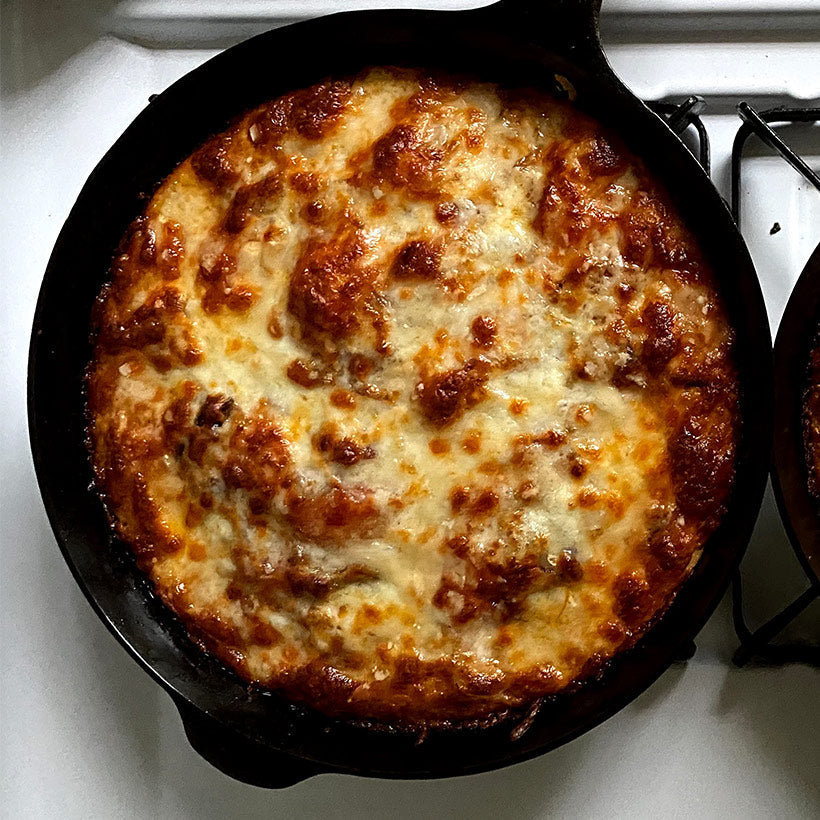What kind of cleaning tools can I use on a cast iron skillet?
When you dive into the Internet, you can find a wide variety of different opinions, tips, and instructions on how to care for your cast iron skillet—and most of what you’ll find is unnecessarily complicated. The truth is, cleaning cast iron can be super simple and easy, with the help of a few good quality tools. To make it even easier for you, we’ve broken down which tools you should use when cleaning cast iron, which ones you shouldn’t, as well as a step-by-step walkthrough of how to wash your pan.
To clean your pan, you’ll need three essential items: a chain mail scrubber, a stiff brush, and seasoning oil. Just like the quality of your cast iron matters, the quality of your cleaning tools does too; that’s why we’ve honed in on the tools that will make caring for your cast iron easy and effective:
Chain Mail Scrubber
Above all else, we’ve found that a Chain Mail Scrubber is vital for good cast iron care. Made from stainless steel links, chain mail is strong enough to remove even the most stuck-on food residue. But more importantly, it’s great for encouraging strong, even seasoning development. This is because chain mail does two things: First, it removes any seasoning that’s not well bonded with the surface of your skillet. This can prevent the possibility of flaking seasoning down the line. (You don’t want to build up good, strong seasoning on top of stuff that’s loose.) Second, it adds texture to the surface of your pan. Seasoning needs something to grip on to, or else it won’t be able to bond with your skillet—by lightly scuffing the surface of your skillet, chain mail gives the necessary texture that allows seasoning to easily develop. Chain mail is particularly good at this because of the large size of its links—using something with small fibers like steel wool would ultimately make your pan more smooth, having the opposite of its intended effect.






